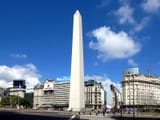As you step out of the cab, the cool air brushes against your face, carrying the faint hum of the city—horns in the distance, the chatter of pedestrians, and the rhythmic pulse of urban life. Your shoes hit the sidewalk with a soft tap, and you take a moment to adjust your jacket, the weight of anticipation settling in. The Natural History Museum looms ahead, its grand stone facade towering like a monument to time itself. The building’s intricate architecture—ornate columns and carved details—feels both imposing and inviting, a gateway to the ancient and the eternal.
You approach the wide steps leading up to the entrance, each one worn smooth by countless visitors. The crowd is a mix of families, tourists snapping photos, and students clutching notebooks, all drawn to the promise of discovery within. The heavy glass doors reflect the late afternoon sun as you push through, stepping into the vast, echoing atrium. The air inside is cooler, tinged with the subtle mustiness of old stone and polished wood. A massive dinosaur skeleton—perhaps a Tyrannosaurus rex or a towering sauropod—dominates the center of the hall, its bones a stark, awe-inspiring reminder of a world long gone.
